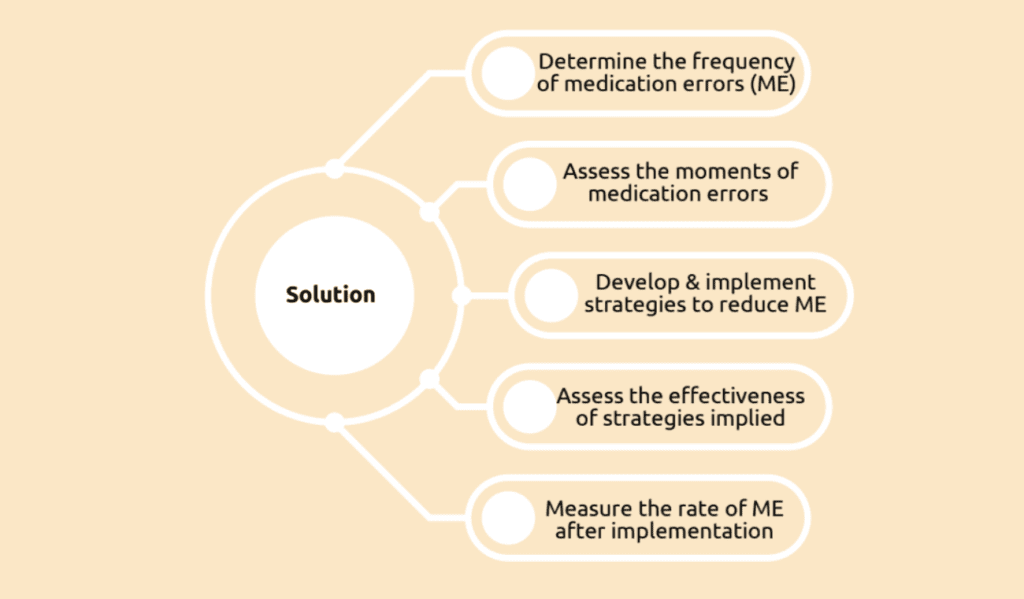Reducing The Medication Errors To Ensure Patient Safety
Read as Magazine PDF
Abstract:
Medication errors pose a significant threat to patient safety in hospital settings worldwide. This article explores the issue of medication errors and the need to reduce them to ensure patient well-being. The study focuses on Lourdes Hospital in Kochi, a renowned healthcare institution. It highlights establishing a Quality Improvement Team and implementing the Plan-Do-Check-Act (PDCA) cycle as effective strategies for process enhancement. The results show a decline in errors, including zero identification errors and reduced discrepancies, following the implementation of these measures. Additionally, the paper discusses the positive impact of multidisciplinary approaches, staff training, and the implementation of stress-relieving morning huddle exercises in the pharmacy.
Organizational Profile
Lourdes Hospital, located in the heart of Cochin, the commercial capital of Kerala, is a renowned tertiary care hospital offering a wide range of specialized medical services. Established in 1965 under the Archdiocese of Verapoly, Lourdes Hospital has become a prominent healthcare facility, catering to approximately 500 in-patients and 1280 out- patients daily. It holds the distinction of being the first mission hospital in Kerala to receive NABH accreditation.
In its 57-year journey, Lourdes Hospital has exemplified a remarkable tale of compassionate service. Recognizing the lack of adequate healthcare infrastructure, delivery systems, and affordability in the region, the Archdiocese of Verapoly chose Pachalam as the therapeutic landscape. Lourdes Hospital has since dedicated itself to meeting the needs of patients and their families, reaching out to the community with unwavering commitment. Notably, the cost of treatment at Lourdes has consistently remained lower than at other healthcare institutions.
Lourdes Hospital continues to expand steadily with a current roster of 36 specialized departments. These departments are equipped with state-of-the-art facilities and staffed by dedicated professionals in training programs. Additionally, Lourdes Hospital serves as a comprehensive teaching institution, offering postgraduate courses (DNB) in 14 specialities, a Nursing College providing B.Sc., post-B.Sc., and M.Sc. courses, a nursing school (GNM), a paramedical college offering various courses, and serving as an AHA International Training Center.
The institution’s primary focus is holistic healing, which addresses the complete well- being of individuals, encompassing their mind, body, and spirit. For over half a century, Lourdes Hospital has remained committed to serving underprivileged sections of society, regardless of caste or creed, through free outreach clinics and funding programs designed for financially disadvantaged people.
Introduction
Medication errors or mistakes can occur at any given time within a hospital setting and pose a significant threat to life and well-being worldwide. In the United States alone, an estimated 7,000-9,000 individuals die annually due to medication errors. Furthermore, numerous patients experience adverse reactions or complications related to medications, although such incidents often go unreported. The primary causes of these errors include inadequate communication of drug orders, illegible handwriting, incorrect drug selection, confusion between drugs with similar names, a disorder due to matching packaging, and errors concerning dosing units or weight.
The problem lies in the need to decrease medication errors to ensure the safety of patients.

Outcome
Some practical solutions also include:
- Establishment of a Quality Improvement Team for Process Enhancement: In response to the directive from the Pharmacy & Therapeutic Committee in March 2021, Lourdes Hospital, Kochi, formed a dedicated team comprising a Quality System Manager, clinical pharmacist, clinical safety officers, and nursing quality professionals. The team’s primary objective is to monitor and enhance the current processes within the hospital.
- Implementation of PDCA Cycle: The Quality Improvement Team at Lourdes Hospital adopted the Plan-Do-Check-Act (PDCA) cycle as their approach to process improvement. This systematic and iterative cycle will enable the team to identify areas of improvement, develop and implement action plans, assess the outcomes, and make necessary adjustments to enhance the overall quality of processes within the hospital.
To maintain the improvements made, the subsequent efforts can be undertaken:
- Positive Impact of Multidisciplinary Measures on Error Reduction: The control chart below illustrates a decline in errors following the implementation of various measures at multiple levels, as determined by the quality improvement team. The team successfully eliminated identification errors and errors in discharge summaries through targeted efforts while significantly reducing other errors.
- Effectiveness Analysis of Implemented Strategies and Staff Training: The quality improvement team thoroughly evaluated the effectiveness of the newly implemented strategies. They provided on-the-spot training and corrections to the staff, resulting in a reduction in unnecessary workload. Furthermore, the team examined the adherence of staff members to policies and procedures, ensuring a comprehensive assessment of overall compliance.
The results of the efforts made were:
- Zero identification errors and reduced discrepancies, including medication administration.
- Daily morning huddle exercises in the pharmacy as stress busters.
Conclusion
Lourdes Hospital’s proactive quality improvement approach has reduced medication errors and improved patient safety. Strategies such as establishing a dedicated team, adopting the PDCA cycle, and incorporating stress-relieving activities have yielded positive outcomes. Continuous monitoring, evaluation, and improvement are crucial for maintaining results and enhancing patient safety in the future.




